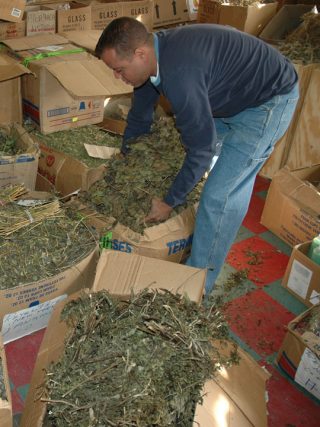
Improving Health Care for Underserved Immigrant Caribbean and Latino Communities in New York City
Ina Vandebroek
The use of unprocessed medicinal plants remains popular among Caribbean and Latino communities in New York City because of cultural ties and traditions, faith in herbal remedies, as well as the perceived or actual cost of biomedical care. This is especially important given New York City’s demographic diversity, with 30% of the population being of Latino descent and Caribbean communities representing the largest group of foreign-born individuals in the city. Scientists at The New York Botanical Garden use ethnobotanical and ethnomedical interview methods and plant identification to compare knowledge and use of medicinal plants among immigrants from the Dominican Republic, Puerto Rico, Mexico and Jamaica who use herbal remedies to treat themselves. In addition, research in New York City botánica shops aims to document the rich plant diversity that is offered in these shops and the multitude of health conditions treated with these herbal remedies. The information generated by this research serves to develop curricular materials and training activities with health care providers so that physicians can be better informed about the complex nature of medicinal plant use in these communities.
More information:
New York Times Article: Wary of Mainstream Medicine, Immigrants Seek Remedies From Home
NYBG Science Talk Blog Post: Where Botany and Healthcare Intersect
Related project: Cultural Competency Training Program for Health Care Providers

Boxes of medicinal plants inside a New York City botánica.